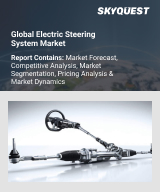
Report ID: SQMIG20T2018

Report ID:
SQMIG20T2018 |
Region:
Global |
Published Date: April, 2024
Pages:
217
|
Tables:
89 |
Figures:
76
Drivers
Increasing Integration of Advanced Driver Assistance Systems (Adas) with Eps
Rapid Development of Sensor Applications
Restraints
High Initial Cost Associated with Implementing an EPS System
Limited Aftermarket
Our industry expert will work with you to provide you with customized data in a short amount of time.
REQUEST FREE CUSTOMIZATIONWant to customize this report? This report can be personalized according to your needs. Our analysts and industry experts will work directly with you to understand your requirements and provide you with customized data in a short amount of time. We offer $1000 worth of FREE customization at the time of purchase.

Report ID: SQMIG20T2018